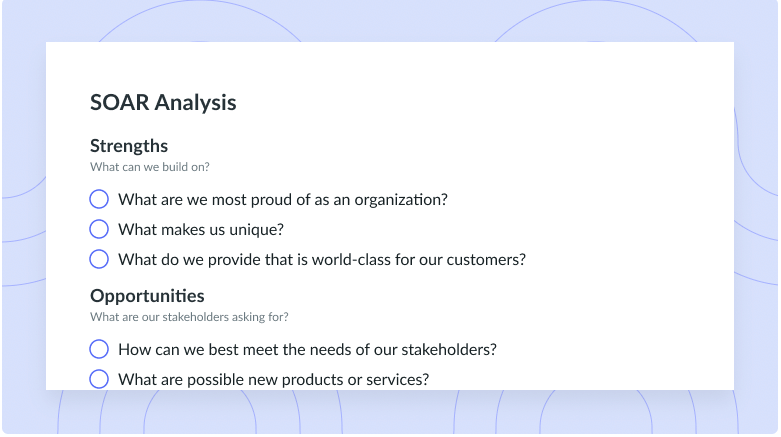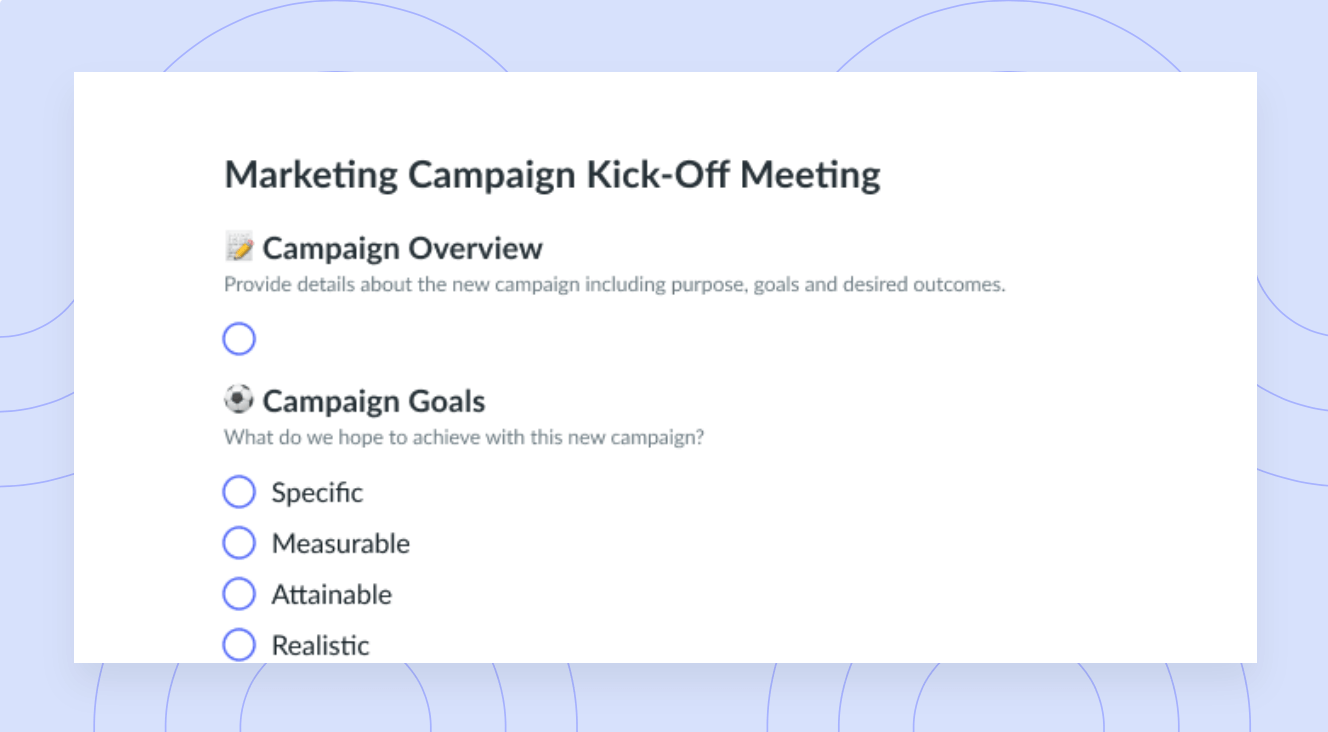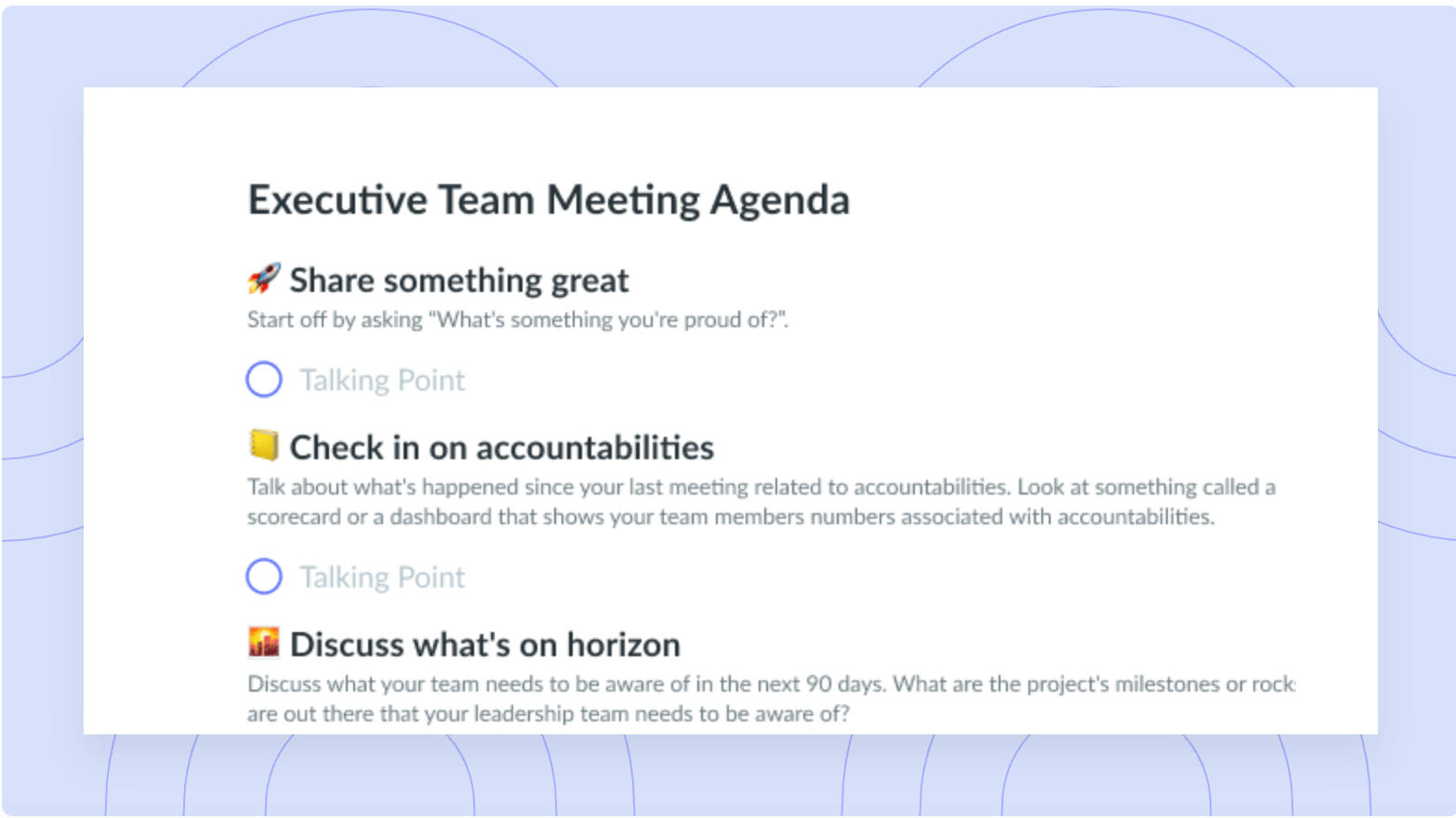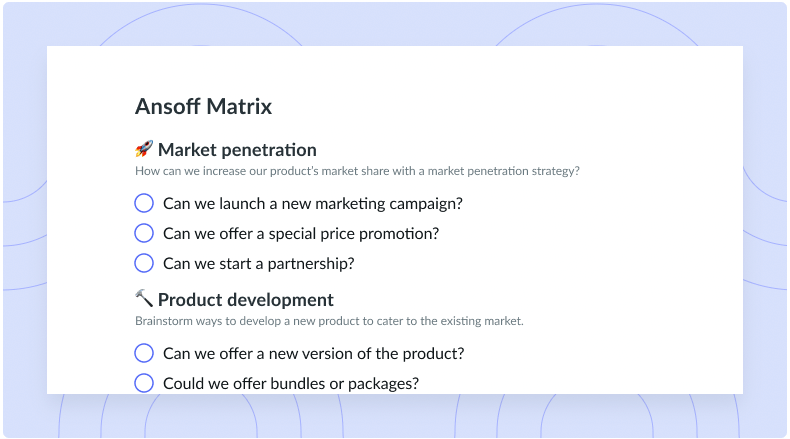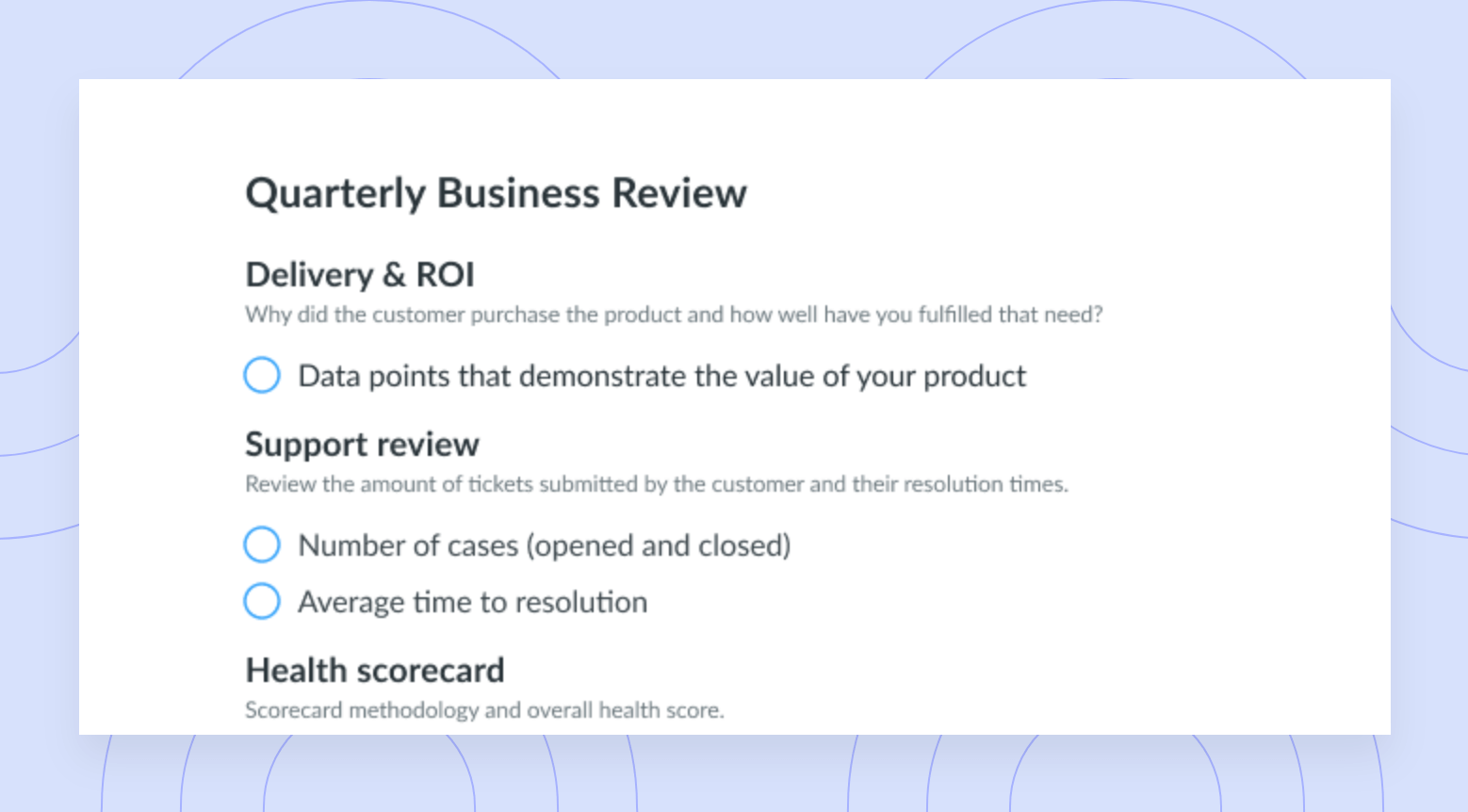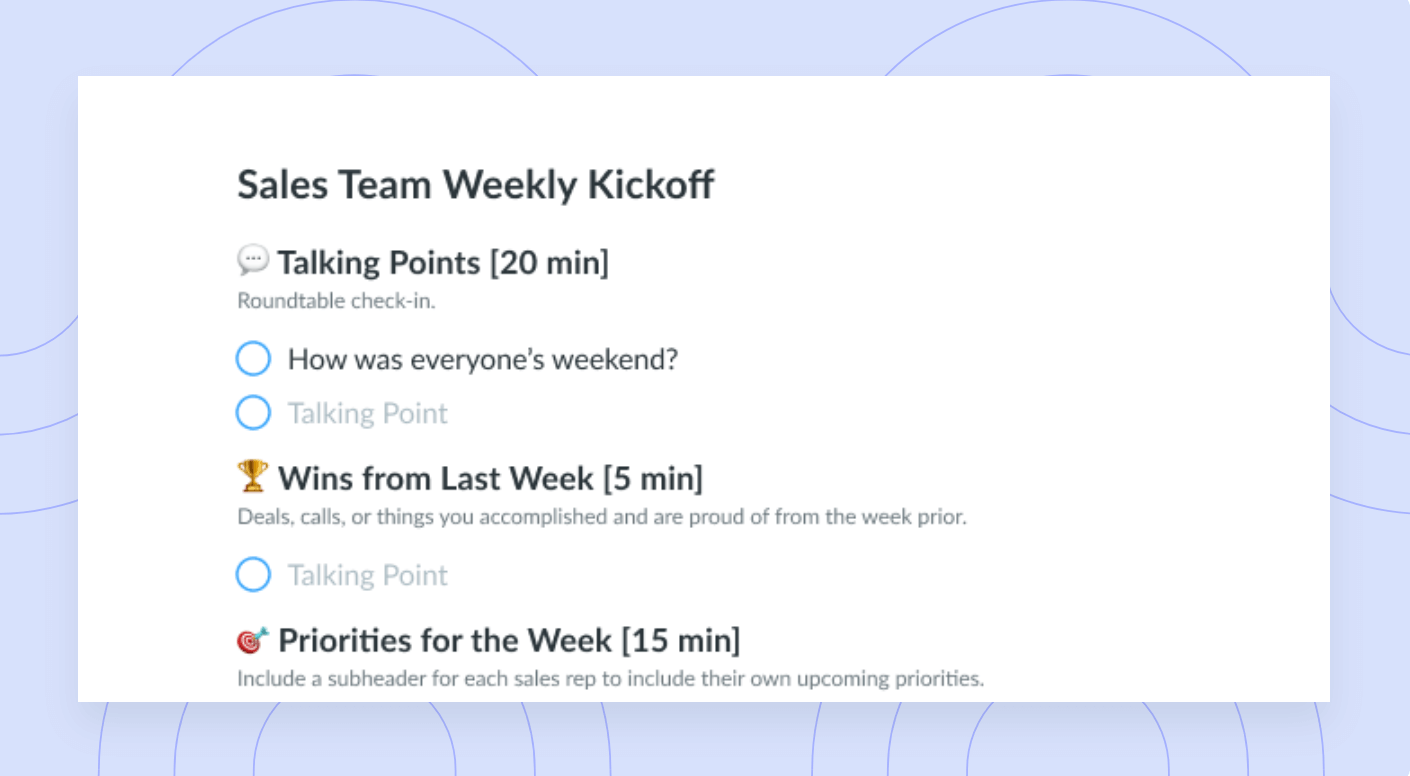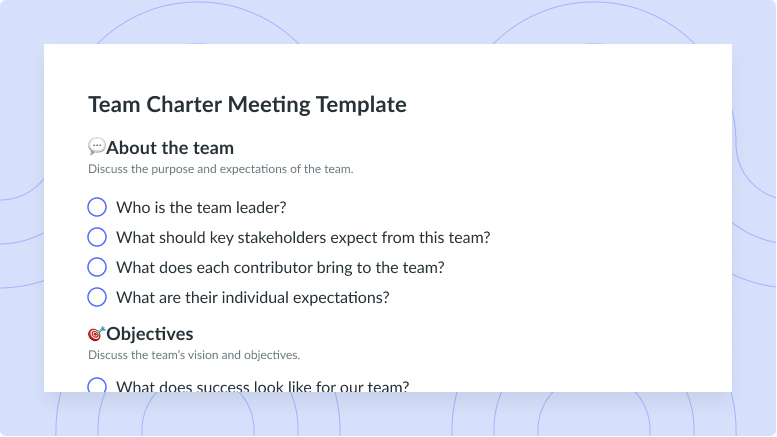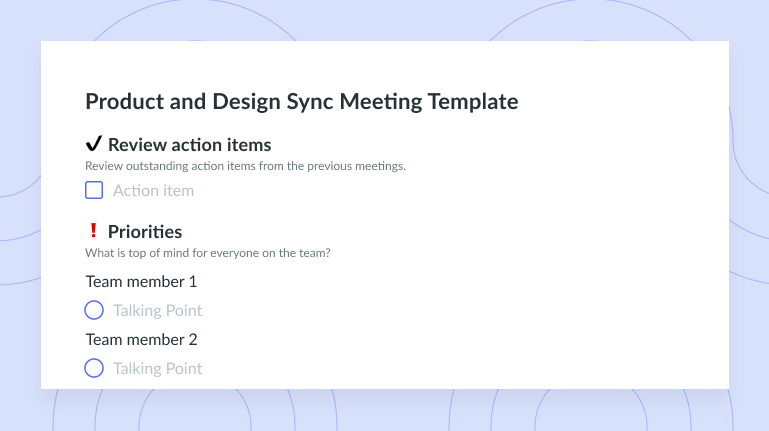Team Alignment: How Your Team Can Improve It
If there isn’t something to align your team, all the varying opinions can become a weakness. Here’s how to improve your team alignment.
A truly good team shines during brainstorming sessions. These big critical-thinking moments give every team member a chance to share their unique viewpoints. And then, it’s on you to combine them all into a course of action that works for both the organization and your team. But what if you can’t align your team behind the same vision and goals?
Team alignment is key to effective brainstorming. It’s also how you keep everyone from stepping on each other’s toes during team meetings. Below, learn what team alignment entails and how it can benefit your organization.
- What is team alignment?
- Why is team alignment important?
- Key objectives of team alignment
- 5 ways to improve team alignment
What is team alignment?
Team alignment describes a group of people, potentially on several teams, that effectively works toward the same vision and goals. It can happen when each team member knows their own goals and the team’s goals equally well. This way, they can work toward both at once, which is better for both them and you. Plus, team alignment means everyone is buying into the organization’s objectives and seeing how their work leads to its success.

Align your team
Have one source of truth for the decisions made and action items assigned during meetings in a collaborative meeting agenda. Try a tool like Fellow!

Why is team alignment important?
Team alignment is similar to keeping employees engaged – both happen when team members can fully get behind their work. However, team alignment differs from engagement in a few big ways. It focuses on common goals, group responsibility for checking all your boxes, and really getting to know the team’s work. And that’s just the start of why team alignment matters. Below are some other reasons.’
- Improved productivity
- Improved performance
- Improved communication
- Higher motivation and morale
- Lower turnover rates
- Increased efficiency to achieve goals
- Ability to make key decisions more quickly
- Ability to adapt to a changing market
1Improved productivity
Improving team alignment makes it more likely that each team member knows exactly what they need to do. That leaves less confusion about who does what when, so you won’t have two people working on the same thing and sapping your efficiency. It’s basically the definition of productivity.
2Improved performance
Team alignment is great for productivity, and it’s great for quality too. When your team better understands your vision and goals, they’ll know exactly what they need to achieve. That means any work they do will get much closer to your company goals than without alignment.
3Improved communication
The key to great communication is team members who understand each other. Team alignment makes that understanding easy. Everyone will be working toward the same clear end goal, so cooperation, collaboration, and teamwork are only natural. You can’t have any of those without great communication.

4Higher motivation and morale
Team alignment and employee engagement often go hand in hand. That’s because an aligned team doesn’t just know its action items – it also knows why and fully believes in that reason. The result is that your team just gets the project and how they’ll play a part – they feel invested in it. That means they’re more motivated to do the work. And since they understand your vision, they’ll probably do it well enough to get great peer feedback that boosts their morale.
5Lower turnover rates
This is another benefit where the relationship between team alignment and higher engagement comes into play. If a team member is invested in their work and their organization, they’re much less likely to leave.
6Increased efficiency to achieve goals
Team alignment doesn’t have to benefit only one of your teams. It can also boost cross-functional collaboration, meaning every team in your organization can reach its goals more quickly. Think about it like this: Each team has more awareness of both its own goals and the whole organization’s goals. Chances are the organization’s goals require one team to get things from another. Aligned teams with clear goals can share what they need from each other much more effectively.
7Ability to make key decisions more quickly
When you’re aligned with your team, you’ll have a much sharper sense of what would be good or bad for their process. This perspective can help you make more informed decisions any time the project comes to a crossroads.
8Ability to adapt to a changing market
Chances are your team does projects for the sake of its customers or clients. But what if their expectations shift before the work is done? Achieving team alignment in your organization means you firmly know the organization’s vision. That means you can pivot to reach new goals without abandoning what makes your organization special.
Key objectives of team alignment
The importance of team alignment becomes even clearer when you look at why so many managers strive for it. Below are just a few of the many goals managers might have in mind when they get more intentional about aligning their teams.
Getting one person’s work in line with their teammates’ work
Your team members each play a part in the final product’s quality. It’s similar to cooking a meal. While each ingredient has its own taste, it’s those tastes coming together that creates something greater than the sum of its parts. When each team member focuses on their individual goals while keeping their teammates’ objectives in mind, better work can result.
Resource efficiency
Team alignment is great for cross-team collaboration since it’ll make you more aware of what one team has done that another can use. For example, if one of your teams writes instructions for a common process, you can share that with another team. That’s basically sharing one team’s resources with another. The extra help can allow your team members to skip unnecessary steps and work more quickly – and accurately.
Effective brainstorming
Understanding a project means understanding each team member’s goals – the essence of team alignment. Knowing how each team member adds to the project can help your team have better brainstorming sessions.
For example, let’s say your graphic designer knows your copywriter is responsible for some new ad copy. Let’s also say the copywriter has a goal of keeping their ad copy to 10 words and you need short copy. The graphic designer can then more easily suggest ideas that fit this goal and their own visual needs for the ad. When your team is aligned, everyone can more readily build off others’ ideas until you reach that big “a-ha!” moment.
Building trust between team members
Remote working environments can be more flexible, but they don’t exactly help your teammates get to know one another. That’s not great for building trust on your team – but team alignment can bridge the gap. Improving team alignment can help team members see eye to eye even if they only see each other on Zoom. When you take the time to get everyone behind the same vision and goals, remote team members can feel more on the same page. The same is true for in-person teams.
Transparency and accountability
When each team member sees the same finish line and racetrack, it’s much easier for everyone to hold each other accountable. And since effective team alignment means regular meetings and updates, transparency is basically inevitable.
5 ways to improve team alignment
Now that you know how team alignment can help your team, you may be wondering how to make it happen. It’s not always easy, but the potential rewards speak for themselves. If you’re looking to solve a lack of alignment, here are five ways you can get started.
- Communicate company goals
- Show your team how their work helps the company
- Choose harmony over rivalry
- Plan as a group
- Compliment, congratulate, and celebrate
1Communicate company goals
Aligning your team with your organizational goals starts with making sure they actually know those goals. Usually, leadership will guide these objectives, but that doesn’t mean they’ll be clear – they might be covered in corporate-speak. You should take the time to make them clearer so your team truly understands what they’re here to do.
2Show your team how their work helps the company
The thought, “If I weren’t here, nothing would change” is terrible for team alignment, but it’s far from unheard of. And sure, it’s never true, but working in a small corner of a large room can make someone feel like their work doesn’t matter. To fight that feeling, you should create a goal-setting framework – say, OKRs and SMART goals. Both these frameworks give your team realistic but challenging goals that tie into your vision. They can seriously motivate your team while keeping everyone on track.

3Choose harmony over rivalry
Don’t get us wrong; competition in the workplace isn’t always a bad thing. Sometimes, a healthy rivalry can push employees to do more – what’s better than outdoing your friendly rival? But you should leave the whole “worst enemies” thing for other settings. Pitting team members against each other tends to get people angry and unmotivated. Trust, teamwork, and generosity are better. After all, employees will work together pretty naturally if they enjoy helping each other out.
4Plan as a group
It’s hard for your team to fully know what to do if only you know the way forward. Working with everyone to set project milestones can keep everyone happy with their work and doing just the right amount. Plus, working together to build the path forward makes your goals and vision pretty clear – that’s team alignment in a nutshell.
5Compliment, congratulate, and celebrate
Even if your team understands your goals and vision, they can still feel a disconnect if their hard work goes unacknowledged. It always helps team alignment to genuinely praise your team members for their great work. Doing so can help your team feel valued and encourage them to keep working at 100%.
Align your team toward success
Even if you’ve handpicked the best possible team members, their work won’t be as great if they don’t understand their goals and the company’s vision. When you improve team alignment, you give everyone a road map toward success, fulfillment, and everything that leads to a brilliant, happy team. And sure, aligning your team can be difficult, but Fellow can lend a hand. Fellow’s OKR tools can help you transparently set timelines, goals, and key results – and get your whole team behind them.







![Management by Objectives (MBO) Strategy: 5 Steps [+Example]](https://fellow.app/wp-content/uploads/2023/06/Management-by-objectives-MBO2.jpg)

